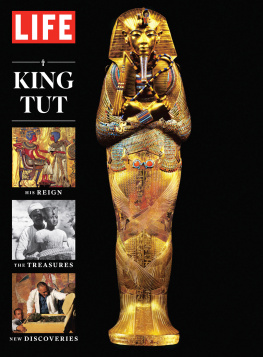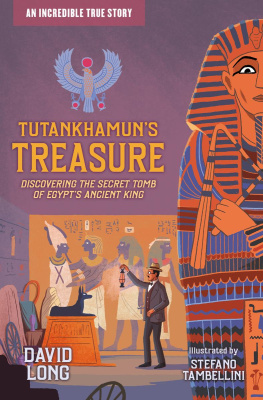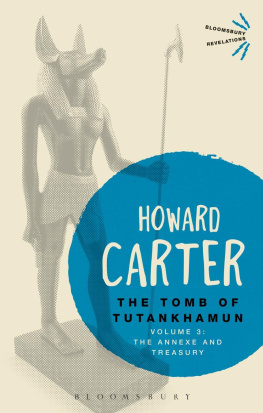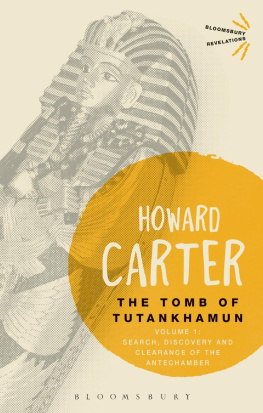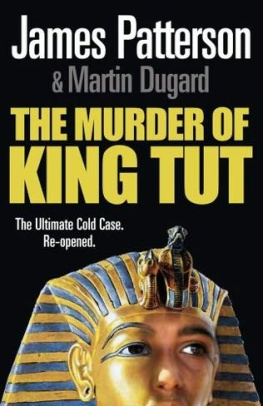

KING TUT
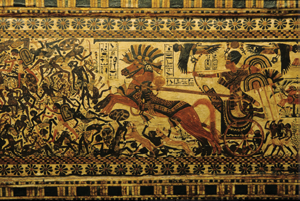

INTRODUCTION
WONDERFUL THINGS


THE GENERAL PUBLIC WAS IN A STATE OF PROFOUND BOREDOM WITH NEWS OF REPARATIONS, CONFERENCES AND MANDATES, AND CRAVED FOR SOME NEW TOPIC THE IDEA OF BURIED TREASURE IS ONE THAT APPEALS TO MOST OF US.
H OWARD C ARTER, ARCHAEOLOGIST, EXPLAINING THE MANIA SPARKED
BY HIS DISCOVERY OF K ING T UTS TOMB IN 1922

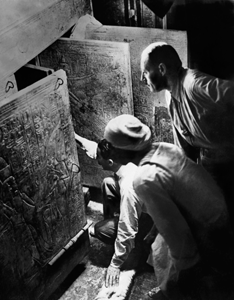
HULTON-DEUTSCH/CORBIS
IN 1922, CARTER discovered the tomb of Tutankhamun, a 3,000-year-old royal burial site that had been largely untouched and filled with ancient treasures belonging to the young king. Past the passageway and antechamber, Carter and his team located the burial chamber, which contained Tuts mummy. Here, Carter (kneeling), British archaeologist Arthur Callender, and an Egyptian workman, peer through the open doors of the gilded shrines. The mummy was laid to rest within four nested shrines, a quartzite sarcophagus, and three coffins.
Some fascinations are truly eternal. Such is the case with the story of King Tut, a tale that continues to be told, and retold, with new insight and wonder throughout the modern age.
At the time of the tombs unearthing, the world that Howard Carter was reflecting on in his book with A.C. Mace, The Discovery of the Tomb of Tutankhamen , was just four years removed from the end of World War I. One out of every 10 people in the U.S. finally owned a car, the latest breakthrough in medicine was the invention of insulin by Sir Frederick Grant Banting, and over the next decadethe amount of time it took Carter and his team to remove and catalog the contents of their digthe world would become home to self-winding watches, frozen foods, traffic signals, Technicolor movies, electric shavers, jet engines, and television. Yet none of those modern advancements would expunge from the pages of popular history a 3,000-year-old Egyptian king who by all accounts led a life of minimal accomplishment punctuated by early death.
From the Roaring 20s straight through to the present day, each new generation has sparked to the same core elements of the Tut story: an ancient and advanced civilization, a young ruler, a mysterious death, and goldlots of goldgilding every corner of his buried legacy. As the times changed, so did the interpretations and manifestations of Tutankhamuns popularity. From fashion and art to touring exhibits and Top 40 radio, folktales to high-tech forensics, Tuts story has not only endured, its been constantly updated to remain forever modern.
As a chronicle of popular culture and history, LIFE reflected on the fascination. The boy kings first cover photo came on April 5, 1968 (billed, appropriately enough, with a review of a fantastic movie about mans future called 2001: A Space Odyssey ). The story inside was actually the first in a series that explored the marvels of ancient Egyptmarvels that arguably wouldnt have been nearly as relevant to LIFE s audience of more than 8 million readers were it not for Carters discovery of the most intact tomb in ancient Egyptian history, and the hoopla that followed.
When Carter first focused his eyes on the contents of Tuts tomb by the flicker of candlelight, he was asked by his benefactor George Herbert, the fifth Earl of Carnarvon, who was standing behind him, if he could see anything. Yes, Carter was finally able to answer after an awestruck pause, wonderful things.
The contents of Tuts tombtreasures of gold, alabaster, wood and lapis lazuli, not to mention a fully intact mummywould not only turn Egypts Valley of the Kings into the place to be seen for the rich and powerful, it would open a symbolic peephole into ancient Egypt, a civilization filled with countless more wonderful things that matched or even surpassed our modern achievements.
For affluent Europeans and Americans of the 1920s, following news of the riches found in Tuts tomb and the theories behind the significance of the objects must have been like peering into a mirror. The ancient Egyptian culture created behemoth structures, designed with unfathomable precision and constructed with the strength to stand the test of time. The Egyptians also demonstrated a vibrant flair in style and art, a powerful political system that spanned three millennia, and an elaborately structured devotion to the idea of an afterlife.
Even today, understanding the history of ancient Egypt allows us to reflect on ourselvesto learn lessons and become beguiled by the romance of a clearly relatable civilization that is still far enough away to feel safely distant and contained, like a bedtime fairy tale. Tut offers us a way into these powerful stories. His life and history are our once upon a time
Over the course of this book, we will show and tell the story of Tutankhamun (13321322 BC)pharaoh of Egypts 18th Dynasty, grandson of one of Egypts most beloved kings, and son of its most reviled. He was a boy who would rule, with heavy guidance and influence from power-hungry advisors, for just 10 years before dying of unknown causes at the age of 19, but who would fulfill his destiny of life never ending. We will relive Carters great adventure, an epic quest led by a frustrated Egyptologist. And we will reveal the latest scientific discoveries that have been used to answer age-old questions and render the most vivid portrait ever created of what Tutankhamun, the man, might really have looked like.
Where does the tale begin? It starts with our interpretation of what Carter himself saw on November 4, 1922: beautiful, golden objects glimmering against a field of darkness. Wonderful things, indeed.

SANDRO VANNINI/CORBIS
IN THE ANTECHAMBER, Carter discovered a magnificent wooden throne covered in a sheet of gold and inlaid with colored glass, faience and semiprecious stones. The arms displayed winged serpents wearing a double crown, signifying Tuts rule over both Upper and Lower Egypt.

REED KAESTNER/CORBIS
THE BACK PANEL OF the throne features Tut with his wife, Ankhesenamun, depicted in lapis lazuli and carnelian. The affectionate image shows the queen bending over and lovingly touching Tut on his shoulder. It is the most beautiful thing that has ever been found in Egypt, Carter later said.
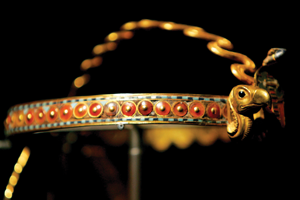
Next page
